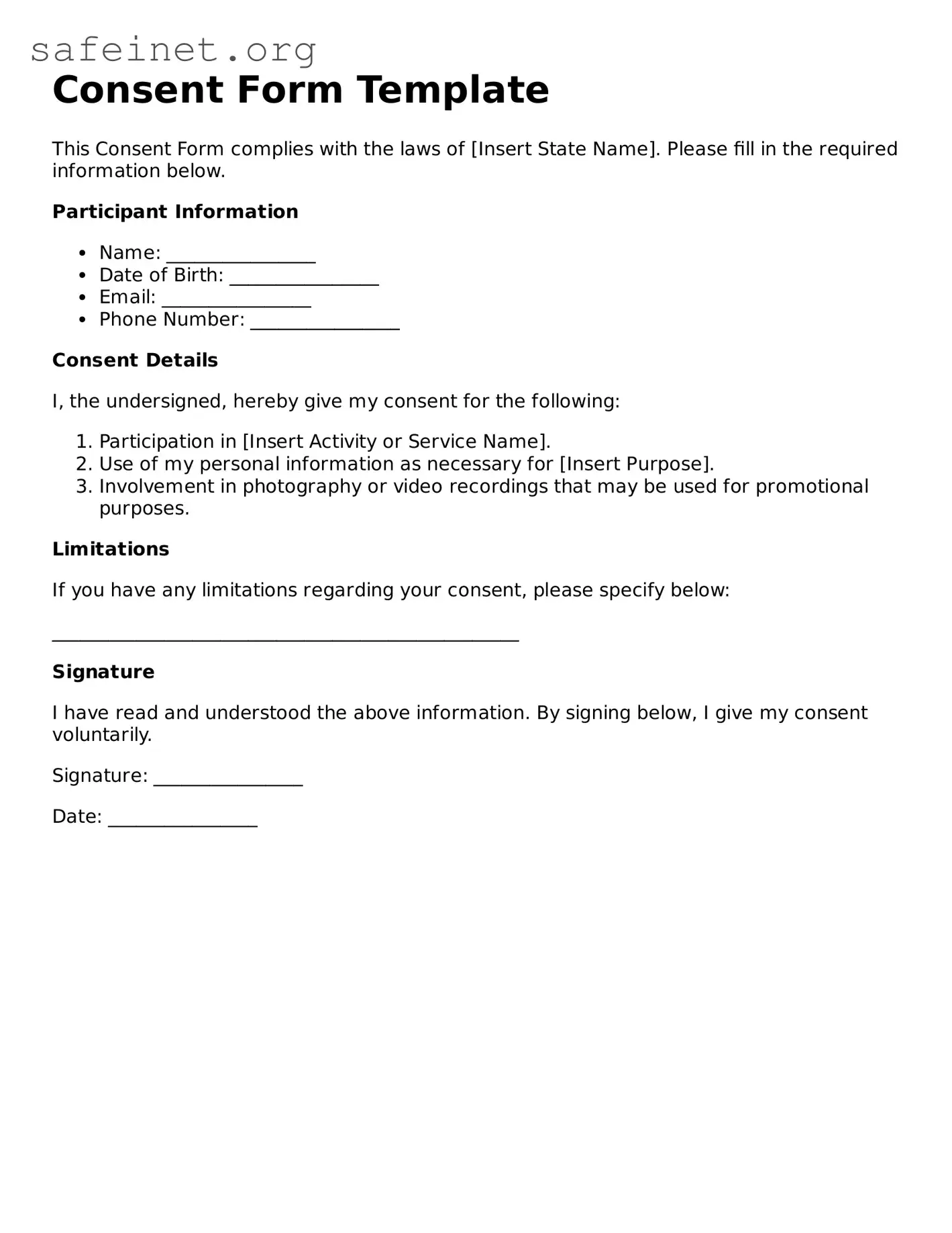What is a consent form?
A consent form is a document that individuals sign to indicate their agreement to participate in an activity, study, or treatment. It typically outlines the purpose of the activity, any potential risks, and the rights of the participant. By signing, individuals acknowledge that they understand what they are agreeing to and consent to proceed.
Why is a consent form important?
Consent forms are crucial because they protect both the individual and the organization conducting the activity. They ensure that participants are informed about what to expect and help prevent misunderstandings. Additionally, they provide a legal record that the participant voluntarily agreed to the terms laid out in the form.
Who needs to sign a consent form?
Generally, anyone participating in research, medical procedures, or activities that could impact their well-being should sign a consent form. This includes adults, minors with parental consent, and individuals involved in clinical trials or studies. It’s essential that all participants understand what they are consenting to before signing.
What should be included in a consent form?
A consent form should clearly explain the purpose of the activity, a description of what will happen, potential risks, benefits, and the rights of the participants. It should also detail how confidentiality will be maintained. Finally, it should provide contact information for questions or concerns.
Can I withdraw my consent once I have signed the form?
Yes, participants can withdraw their consent at any time. They do not have to provide a reason for their decision. It is essential that participants feel comfortable and respected throughout the process. The consent form should indicate how participants can withdraw their consent if they choose to do so.
What happens if someone does not sign the consent form?
If a person chooses not to sign the consent form, they cannot participate in the activity, study, or treatment. Organizations typically require signed consent to ensure that participants are aware of the information governing their involvement. This rule protects the rights and safety of everyone involved.
Is there a specific age requirement for signing a consent form?
In the United States, individuals typically need to be at least 18 years old to sign a consent form independently. For minors, parents or legal guardians usually need to sign on their behalf. Different states may have varying laws, so it is always important to check local regulations regarding consent.
How can I ensure that my consent form is valid?
To ensure a consent form is valid, it should be written in clear, simple language that participants can easily understand. It must also be signed voluntarily without pressure. Finally, it should comply with applicable laws and regulations regarding consent for the specific activity being conducted.
